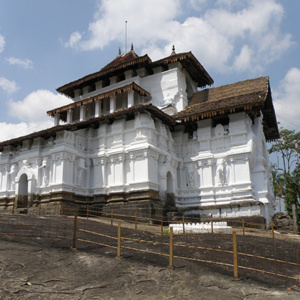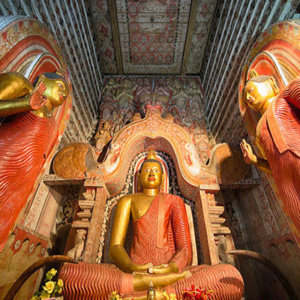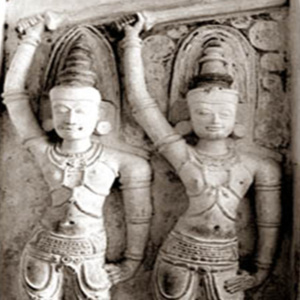


lankathilaka-viharaya-kandy
lankathilaka-viharaya-srilanka
lankathilaka-viharaya-srilanka-kandy
The Lankatilaka Vihara is situated in Udunuwara, Kandy and is one of Sri Lanka’s ancient temples and is a few kilometers from the Gadaladeniya Vihara. The temple dates back to the 14th century. The temple was constructed by King Bhuvanekabahu IV (1341-1351) A.D. The construction of this temple was given over to the King’s Chief Minister Senalankadhikara, who was successful in completing the entire work pertaining to this temple. Sathapati Rayer the Indian architect who designed this temple implemented Sinhalese architecture pertaining to the Polonnaruwa period.
The building stands on a natural rock called the Panhalgala Rock. The image house is of unique designs and architectural features, elaborated with traditional Sri Lanka carvings. The inscriptions of the Lankatilaka Copper Plaque depict that the image hosue was once a four storied building standing at a height of 80 feet, but today it depicts only 3 stories. The walls and ceiling depicts images of the Kandyan era.
The rock carved inscriptions that are found in the temple in both the Sinhala and Tamil Sections, depict proof of the initiators and facilities provided to the temple by the Kings, who reigned in Sri Lanka at the time.
The five devalas dedicated to Gods Upulvan, Ganapathi, Saman, Vibhishana and Kumara Bandara. God Kumara Bandara however, is supposed to be the deity who protects the Lankatilaka Vihara.
Kandy is a city that has a rich heritage of old Ceylon and reigning Kings who were very interested in carvings and intricate sculptures, that it is amazing to see how well they have been turned out and how mindful architects of yore were to detail. No doubt the present times will never be able to literally “brush shoulders” with the past, where Kings and subjects worked together to bring out the best in temples and statues.


